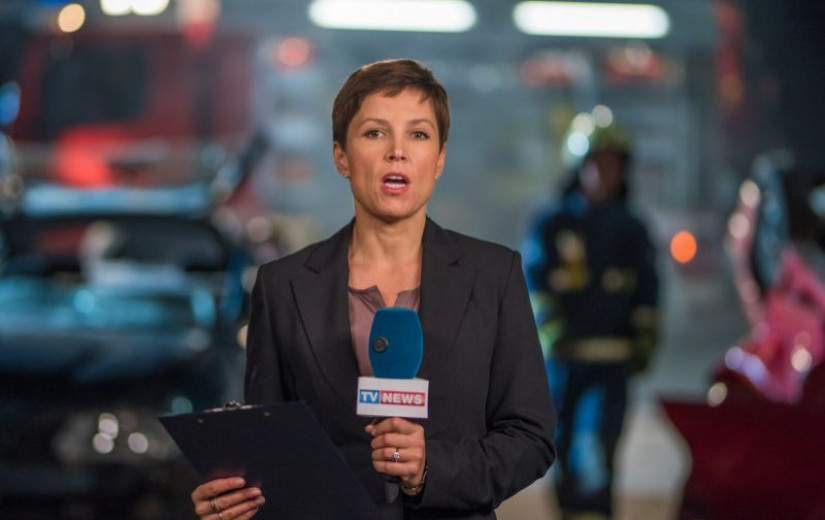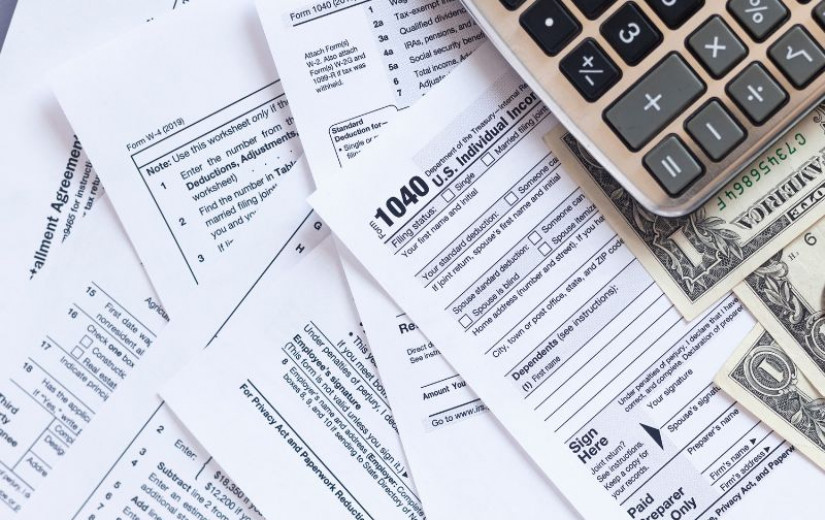
For the past 20 years, Janet Edmunson has run support groups for patients with rare neurological diseases that have no known treatment or cure. What they want to know, Edmunson said, is “‘When are they going to heal me?’”
Medical breakthroughs that might offer hope to these patients and their families are often the purview of academic researchers working at universities. But a directive in January from the National Institutes of Health (NIH) under the Trump administration aimed to reduce funding for many of the essential costs that make these studies possible. Even though a judge has halted the policy, scientists and advocates say the threat to critical research remains.
Edmunson runs the support group for CurePSP, a nonprofit advocacy organization dedicated to patients with progressive supranuclear palsy. PSP, a terminal neurodegenerative disease also known as an atypical Parkinsonism, affects about 30,000 Americans. It robs them of their ability to speak, read, eat and eventually swallow within five to seven years of diagnosis.
The disease is similar in some ways to amyotrophic lateral sclerosis (ALS), or Lou Gehrig’s disease, which affects about the same number of people.
READ MORE: Federal judge blocks Trump administration’s drastic funding cuts to medical research
In September, the University of California at San Francisco (UCSF) announced a first-of-its-kind clinical drug trial to treat PSP. However, the trial’s future is uncertain following the directive, which capped indirect costs for NIH research grants at 15 percent.
“It is accordingly vital to ensure that as many funds as possible go towards direct scientific research costs rather than administrative overhead,” according to the NIH policy statement.
The direct costs of a clinical trial might go toward salary for researchers, patient care and the cost of supplies – expenses that are specific to a project and can be singled out on a grant application.
Indirect costs include technicians, grant administrators, legal staff and janitors, as well as electricity, lab maintenance and insurance – all elements that make the research possible, but might be shared with other projects.
The order “was a huge shock wave to the entire field,” said Kristophe Diaz, executive director of CurePSP, whose organization is helping recruit patients for the PSP drug trial.
On April 4, a federal judge issued a permanent injunction against efforts to cap indirect costs, a decision the Trump administration signaled it will appeal.
To Diaz, it was good news but uncertainty still looms. “I don’t think any universities feel that the problem is behind them,” he said.
“While we were pleased to see the permanent injunction, we are also aware that the legal debate over this issue is likely to continue, and as it does, so will the instability of the environment,” said Annie Kennedy, chief of policy, advocacy and patient engagement at the EveryLife Foundation for Rare Diseases.
Why indirect costs are essential to medical research
Most disease experts are located at universities or academic research centers, said Dr. Adam Boxer, principal investigator of the PSP clinical trial at the UCSF’s Memory and Aging Center.
“The way that universities and academic research centers involved in biomedical research keep the lights on, literally, is through their indirect costs that they collect from our grants,” Boxer said.
In the case of neurodegenerative diseases, Diaz said funding for indirect costs pays for brain banks, freezers that house up to 80 people’s brains at medical research centers.
“Those are hard costs,” Kennedy said. “They need to be paid.”
And if universities can’t keep the lights on or retain staff to manage finances, distribute the money and manage any potential legal issues, “then it’s very hard for us to do anything,” Boxer said.
He said for the PSP trial to operate, it will need at least 50 institutions around the country to enroll patients and administer the drug. Many of those institutions don’t have a lot of resources and rely on help from UCSF to cover the indirect costs.
“What will happen to all these other smaller sites?” Boxer said. “They’re barely able to operate with the amount of money that we’re giving them, and then you take away a substantial proportion.”
“So now you have academic researchers, experts, innovators who now have to determine what they have to shave off, and whether or not they have the capacity to conduct that study anymore,” Kennedy said.
Covering indirect costs at larger universities also allows for pooling of resources and for reduction of duplication, including using the same human resources, legal counsel and building and maintenance staff, Kennedy said.
“They can take on rare diseases more and have more experts who know your disease,” Kennedy said, adding that fewer than a dozen such experts might exist across the country in some cases.
Debate over indirect costs
Critics of higher indirect costs allege wasteful – and even abusive – spending by some universities, or a lack of transparency about how funds are spent. The Trump administration has estimated that capping indirect costs would result in savings of $4 billion a year out of the NIH’s $35 billion annual grant budget. Indirect costs for some institutions can average about 30 percent, with some exceeding 50 percent.
A cap on indirect costs would present an additional funding conundrum to institutions. Grants from private charities are usually much smaller and universities have to rely on federal grants to cover indirect costs in order to to take on the private grant, Boxer said.
“The fact that NIH was paying a higher indirect is what actually made it possible for those charitable organizations to come in, and private foundations to come in, at a lower indirect,” Kennedy said.
Some critics have argued that large university endowments should be used to cover indirect costs. However, it would not be a fool-proof solution; many non-Ivy League universities lack large enough endowments to cover the indirect costs, Diaz said. In addition, donors often earmark endowment money for specific purposes, meaning universities must follow strict rules.
“The point of endowments is to generate revenue to sustain research, but conceptually forever. Right? So it’s not this really, really large reserve that all of a sudden you can tap into in a time of crisis,” Diaz explained.
Dr. David Skorton, head of the Association of American Medical Colleges, told the PBS News Hour that private foundations operate under different rules than the federal government that allow them to label some of the costs as direct costs. Both Skorton and Boxer said industry-sponsored grants pay even higher indirect costs than NIH grants and that federal grants do not actually cover all of the direct costs of a clinical trial.
Boxer said this is when an endowment at a large Tier 1 research university, like UCSF, can play a critical role, since it can be used to cover the difference.
What’s at stake for patients and the future of innovation
Twenty-five years ago, Janet Edmunson’s husband Charles, a successful businessman who was part of the employee ownership movement, was diagnosed with corticobasal syndrome (CBS) at 45.
“We would have done any research. We would have done anything,” Edmunson said, but nothing was available back then.
They got to have two more good years together, but Charles died five years after his diagnosis, Edmunson said. “If those two decent years could have been three or four — just to have a couple more years with your loved one would be phenomenal.”
Extending people’s lives is exactly what the PSP trial aims to do, and from there scientists can expand their research further, Boxer said.
The PSP study could be beneficial to other atypical Parkinsonisms, he said, including CBS and multiple system atrophy, as well as for patients of Alzheimer’s, which is often the underlying pathology for these diseases.
One potentially cost-saving and groundbreaking approach lies in the PSP trial’s novel platform method, which allows researchers to test multiple drugs at the same time and continue with the study even if one fails, Diaz said. Only 25 percent of participants receive a placebo, making it more ethical, he added. Platform studies have been used in cancer and infectious disease trials for years and saw success in the HEALEY platform trial for ALS patients.
“I think the current administration is very interested in efficiency and financial efficiency. And this is a much more efficient way to do clinical trials,” Boxer said. “It saves time, money and participants over traditional approaches.”
“It incentivizes companies, so it helps business also,” he added.
Kennedy said delayed clinical trials put people’s lives at risk and sideline research.
“Even if that delay only lasts for six or 12 months, many of those people will maybe have even passed on, depending on the disease that they have,” she said.
The academic research center pipeline often starts with grassroots organizations providing a small grant to a post-doctoral student just starting out on their medical career, Diaz said. Within a few years, the researcher can apply for a larger NIH grant.
“And it’s once NIH then starts funding this investment, that then in my eyes, it really begins to get real,” Kennedy said.
An early career researcher, who has been working 12 to 15 years to get to a point that they finally can run a lab themselves, depends on indirect costs just to build the lab, Diaz said. “If you remove indirect costs, it basically stops the scientific process,” he said.
But researchers and advocates say it is the people with the disease and their loved ones who would suffer the most.
“I would say anything that impacts this research being done is a hit to Americans. A hit to me. A hit to my people, and my support groups,” Edmunson said. A drug trial for these diseases right now is a matter of life and death for patients and families, she added.
After leading and participating in more than 50 clinical trials for the past 20 years, Boxer said people have advised him to move on to other fields — something he isn’t prepared to do even with the latest uncertainty.
“I feel like I have a responsibility to my patients and their families to do something. And if I don’t do it, if we don’t do it, who’s going to do it?”









